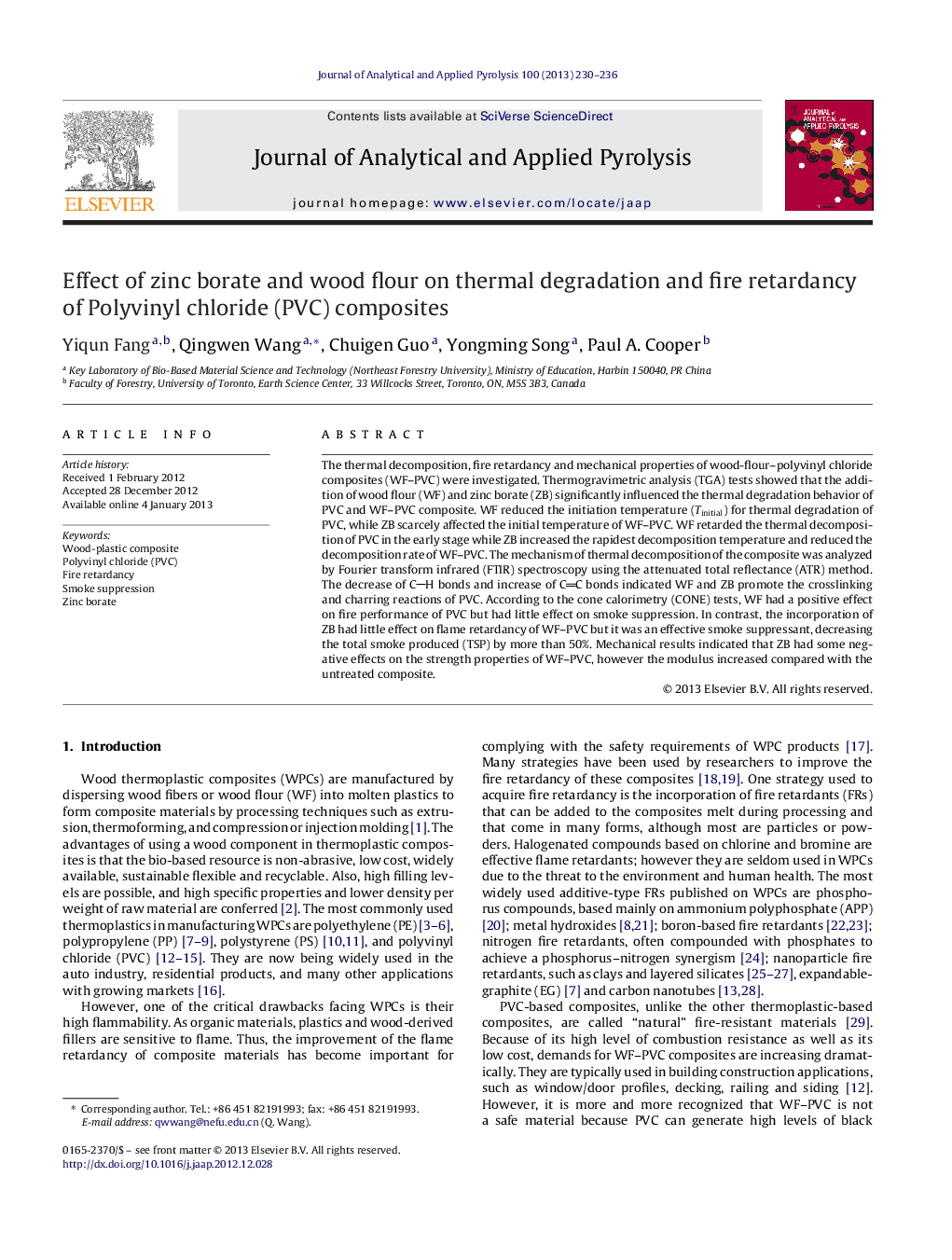| Article ID | Journal | Published Year | Pages | File Type |
|---|---|---|---|---|
| 1196936 | Journal of Analytical and Applied Pyrolysis | 2013 | 7 Pages |
The thermal decomposition, fire retardancy and mechanical properties of wood-flour–polyvinyl chloride composites (WF–PVC) were investigated. Thermogravimetric analysis (TGA) tests showed that the addition of wood flour (WF) and zinc borate (ZB) significantly influenced the thermal degradation behavior of PVC and WF–PVC composite. WF reduced the initiation temperature (Tinitial) for thermal degradation of PVC, while ZB scarcely affected the initial temperature of WF–PVC. WF retarded the thermal decomposition of PVC in the early stage while ZB increased the rapidest decomposition temperature and reduced the decomposition rate of WF–PVC. The mechanism of thermal decomposition of the composite was analyzed by Fourier transform infrared (FTIR) spectroscopy using the attenuated total reflectance (ATR) method. The decrease of CH bonds and increase of CC bonds indicated WF and ZB promote the crosslinking and charring reactions of PVC. According to the cone calorimetry (CONE) tests, WF had a positive effect on fire performance of PVC but had little effect on smoke suppression. In contrast, the incorporation of ZB had little effect on flame retardancy of WF–PVC but it was an effective smoke suppressant, decreasing the total smoke produced (TSP) by more than 50%. Mechanical results indicated that ZB had some negative effects on the strength properties of WF–PVC, however the modulus increased compared with the untreated composite.
► WF improved the thermal properties of PVC matrix at a lower temperature while ZB presented better thermal properties at a higher temperature. ► The decrease of CH bonds and increase of CC bonds indicated WF and ZB promote the crosslinking and charring reactions of PVC. ► WF had little effect on smoke suppression but resulted in a positive effect on other fire performance properties of PVC. ► ZB hardly contributed to the flame retardancy of WF–PVC but it effectively functioned as a smoke suppressant for WF–PVC composite.
